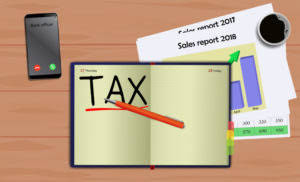Content

Manufacturers must strategically choose periodic or perpetual inventory accounting to manage this material efficiently and keep from adding unnecessary internal costs. Note that for a periodic inventory system, the end of the period adjustments require an update to COGS. To determine the value of Cost of Goods Sold, the business will have to look at the beginning inventory balance, purchases, purchase returns and allowances, discounts, and the ending inventory balance. A perpetual inventory system automatically updates and records the inventory account every time a sale, or purchase of inventory, occurs. You can consider this “recording as you go.” The recognition of each sale or purchase happens immediately upon sale or purchase. The software is a periodic system that will display the inventory price recorded at the last physical count – it doesn’t update sales supported.
- Any business can use a periodic system since there’s no need for additional equipment or coding to operate it, and therefore it costs less to implement and maintain.
- The software you introduce into the workflow will make it easier for you to update and maintain your inventory.
- Our powerful delivery management platform offers a wide range of features designed to help you save time, reduce costs, and improve the overall delivery experience for your customers.
- Subtracting this ending inventory from the $16,155 total of goods available for sale leaves $9,360 in cost of goods sold this period.
- For the periodic inventory method, there’s no need to continually record the inventory levels.
- This meant businesses that could have used perpetual inventory or sorely needed to were stuck using periodic measurements that adversely impacted long-term and medium-term business decisions over time.
Sometimes, a business will experience goods lost in transit, purchase returns, product recalls, and the like. With periodic inventory, however, there’s no way to account for these unexpected changes. For when a periodic inventory system is used businesses with a single location or few product lines, a periodic inventory system can do the job. It’s relatively easy to keep tabs on sale transactions and estimate the current inventory levels.
Periodic vs. Perpetual Inventory: What’s the Difference?
With advancements in point-of-sale technologies, inventory is updated automatically and transferred into the company’s accounting system. This allows managers to make decisions as it relates to inventory purchases, stocking, and sales. The information can be more robust, with exact purchase costs, sales prices, and dates known. Although a periodic physical count of inventory is still required, a perpetual inventory system may reduce the number of times physical counts are needed. A physical inventory count requires companies to do a manual “stock-check” of inventory to make sure what they have recorded on the books matches what they physically have in stock.
Inventory shrinkage refers to the difference between how many items should be remaining (based on sales) and how many actually are. These discrepancies can happen as a result of employee theft, shoplifting, or vendor mistakes. Each of these methods can be used to help you calculate the value of your beginning inventory and ending inventory. Periodic inventory can be too simplistic, especially for businesses experiencing growth or expanding to new locations. At any time between these intervals, all inventory levels are based on estimations and historical data. A company’s COGS vary dramatically with inventory levels, as it is often cheaper to buy in bulk, especially if it has the storage space to accommodate the stock.
Benefits of periodic inventory
The specific identification method is the same in both a periodic system and perpetual system. Although not widely used, this method requires an extremely detailed physical inventory. The company must know the total units of each good and what they paid for each item left at the end of the period. In other words, the company attaches the actual cost to each unit of its products. This is simple when the products are large items, such as cars or luxury technology goods, because the company must give each unit a unique identification number or tag. Periodic inventory is a system of inventory valuation where the business’s inventory and cost of goods sold (COGS) are not updated in the accounting records after each sale and/or inventory purchase.

They report the ending inventory for each purchase date first, then add them up. Calculate COGs for each line item, and then add them together to get the period’s COGS. While the system may work for smaller businesses, it can prove to be highly problematic for large businesses due to its high level of inaccuracy. Since the periodic system is manual, it’s prone to human error and the inventory data can be misplaced or lost. Since the periodic system involves fewer records and simpler calculation than the perpetual system, it is easier to implement.